View in other NatureServe Network Field Guides
NatureServe
Montana
Utah
Wyoming
Idaho
Wisconsin
British Columbia
South Carolina
Yukon
California
New York
Lake Darner - Aeshna eremita
State Rank Reason (see State Rank above)
The Lake Darner is currently ranked S3S4 as a "potential species of concern" in Montana because it is potentially at risk of extirpation in the state due to limited and/or declining numbers, range and/or habitat, even though it may be abundant in some areas.
General Description
The Lake Darner is a member of the family Aeshnidae. Darners are among the largest and fastest-flying North American dragonflies, 2 1/4-4 3/4" long. These brilliant blue, green, or brown insects have large, clear wings spanning up to 5 7/8". Their compound eyes meet on top of the head. The female hovers above water usually attached or guarded by the male and, using a well-developed ovipositor for slicing into emergent plants, thrusts eggs one at a time in the stems. Preferred habitat is sparsely vegetated or woody lakes and ponds, as well as marshes, fens, bogs and slow-flowing streams. Wetland systems: Western Emergent Marsh, Northern Rocky Mountain Wooded Vernal Pool and the Rocky Mountain Subalpine-Montane Fen.
Species Range
Montana Range
Range Descriptions
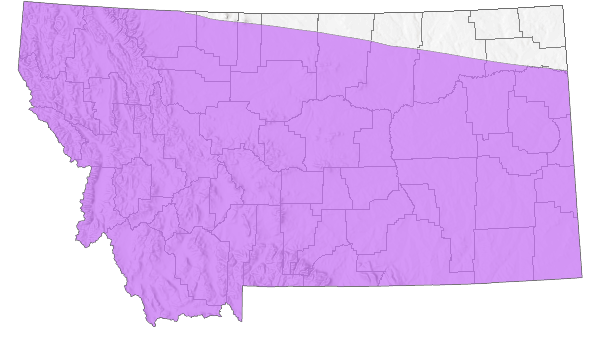
 Native
Native
Range Comments
This species has a widespread range across much of the northern states and Canadian provinces North America, with its southern extent to Utah and Colorado. In Montana, distribution is largely in the western forested areas. In western Montana (Miller and Gustafson 1996), but some new records are extending the distribution further east (Kohler, pers comm.)
Observations in Montana Natural Heritage Program Database
Number of Observations: 134
(Click on the following maps and charts to see full sized version)
Map Help and Descriptions
Relative Density
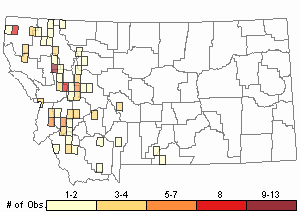
Recency
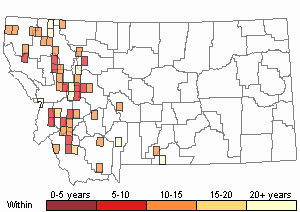
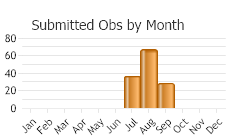
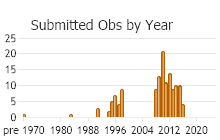
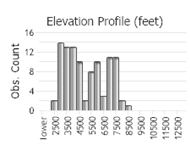 (Observations spanning multiple months or years are excluded from time charts)
(Observations spanning multiple months or years are excluded from time charts)
Habitat
Lake Darners prefer sparsely vegetated or woody lakes and ponds, as well as marshes, fens, bogs and slow-flowing streams. They feed at forest openings and will perch on trees, branches and sometimes on the ground (Dunkle 2000, Paulson 2009).
National Vegetation Classification System Groups Associated with this Species
Wetland and Riparian
Alkaline - Saline Wetlands
Alpine Riparian and Wetland
Peatland
Riparian and Wetland Forest
Wet Meadow and Marsh
Food Habits
Larvae feed on a wide variety of aquatic insects, such as mosquito larvae, other aquatic fly larvae, mayfly larvae, and freshwater shrimp. They will also eat very small fish and tadpoles.
Adult- The dragonfly will eat almost any soft-bodied flying insect including mosquitoes, flies, small moths, mayflies, and flying ants or termites.
Reproductive Characteristics
Male Lake Darners are not territorial and fly over open water or along shorelines, usually staying out of vegetation except when to search for females. They do not hover like most other Darners and will fly continually all day long investigating anything near the water. Females oviposit on floating logs, in stems of emergent herbacous vegetation, and in root tangles at or just below the waterline (Dunkle 2000, Paulson 2009).
Stewardship Responsibility
References
- Literature Cited AboveLegend:
 View Online Publication
View Online Publication Dunkle, S.W. 2000. Dragonflies through binoculars: A field guide to dragonflies of North America. New York, NY. Oxford University Press. 266 pp.
Dunkle, S.W. 2000. Dragonflies through binoculars: A field guide to dragonflies of North America. New York, NY. Oxford University Press. 266 pp. Kohler, Steve. Montana Department of State Lands, Forestry Division, 2705 Spurgin Road, Missoula, MT 59801 406/542-4238.
Kohler, Steve. Montana Department of State Lands, Forestry Division, 2705 Spurgin Road, Missoula, MT 59801 406/542-4238. Miller, K.B. and D.L. Gustafson. 1996. Distribution records of the Odonata of Montana. Bulletin of American Odonatology 3(4):75-88.
Miller, K.B. and D.L. Gustafson. 1996. Distribution records of the Odonata of Montana. Bulletin of American Odonatology 3(4):75-88. Paulson, D.R. 2009. Dragonflies and Damselflies of the West. Princeton University Press, Princeton. 535 pp.
Paulson, D.R. 2009. Dragonflies and Damselflies of the West. Princeton University Press, Princeton. 535 pp.
- Additional ReferencesLegend:
 View Online Publication
View Online Publication
Do you know of a citation we're missing? Nelson, Howard E. 1953. The summer dragonflies of Flathead Valley, Montana. M.A. Thesis. University of Montana. Missoula, MT.
Nelson, Howard E. 1953. The summer dragonflies of Flathead Valley, Montana. M.A. Thesis. University of Montana. Missoula, MT.
- Web Search Engines for Articles on "Lake Darner"
- Additional Sources of Information Related to "Insects"





